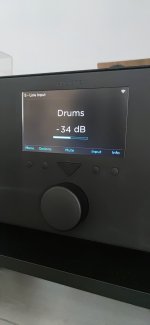Here are some comments from different fora related to a question also asked in this thread: What’s the difference between Scientist Series, former AudioNet products, and other top integrateds?
It appears that DC coupling is a big difference technically, also the bandwidth of the scientist series is quite a bit wider.
Since Humboldt has the same DNA as Stern-Heisenberg the assumption is Humboldt betters SIA-030. Humboldt has better resolution, SIA-30 is darker sounding.
———————-
Humboldt is, for me, the best Integrated I've heard: bettering Vitus, Pilium, Soulution, Nagra, Stern plus Maxs, CH M1.1s, D'agostino and EMM lab separates. Only the Stern & Heisenbergs eclipse this integrated IMHO.
Much more musically involving for me. Better dynamics (micro and macro), lower noise floor, exceptional transparency, low level and micro details, yet not at all bright or etched. Did I mention Dynamics?
All of these attributes, for me add up to more MUSICALITY. All the other contenders editorialize relatively speaking. (Check out Greg Weaver's comments on the line in general.) I know Weavers heard a TON more contenders than me, and a little birdie told me he's saving his hard earned pennies to buy the Heisenberg monoblocks.
———————-
The Humboldt, is so far ahead of Audionet's own MAX in all the above regards, that It's almost embarrassing. And I would still take the Audionet MAX's above the other brands under discussion.
Sent from my iPad using Tapatalk





